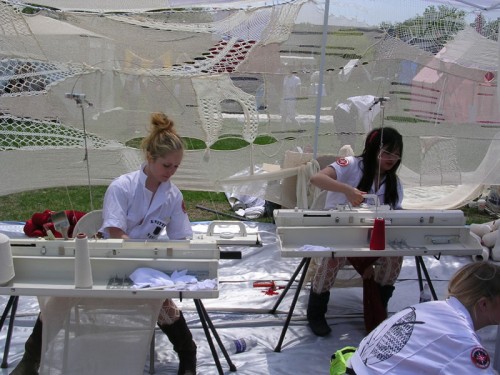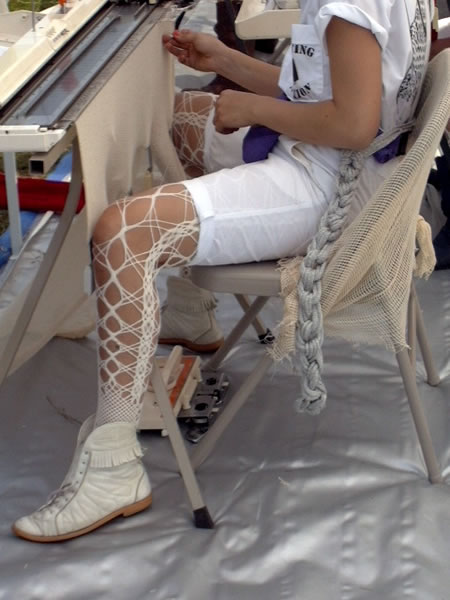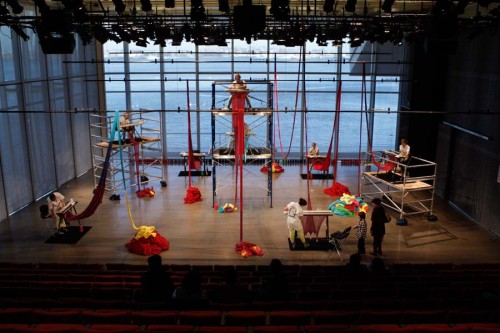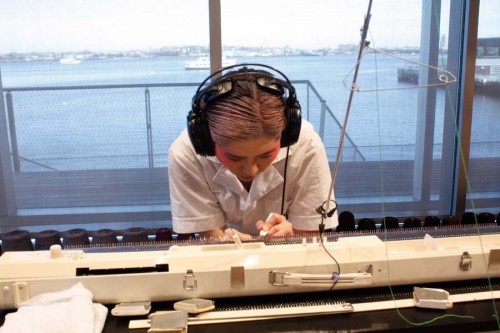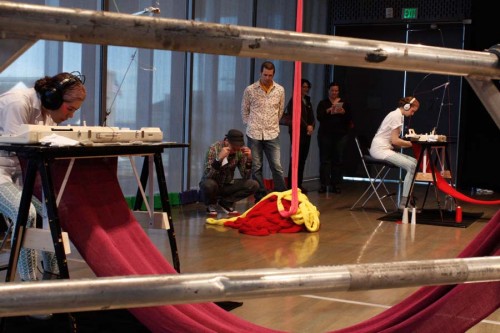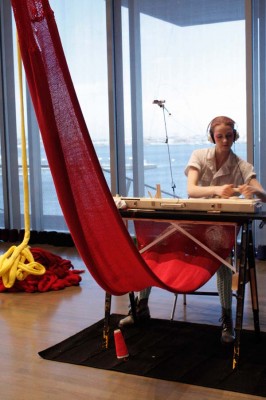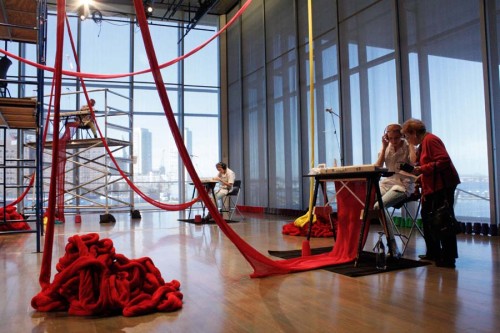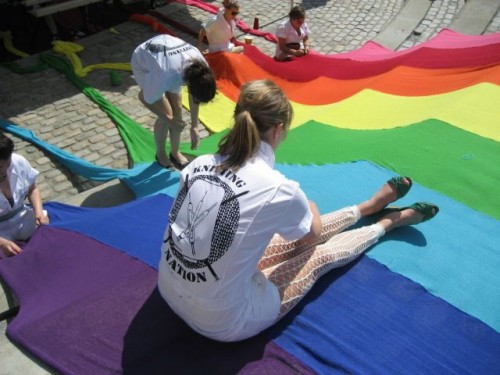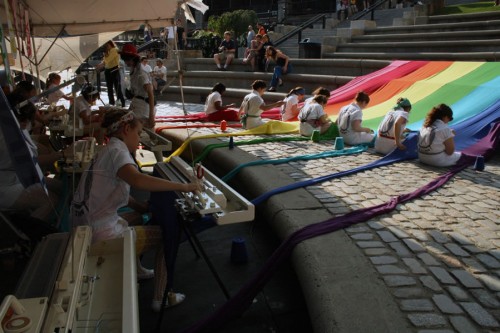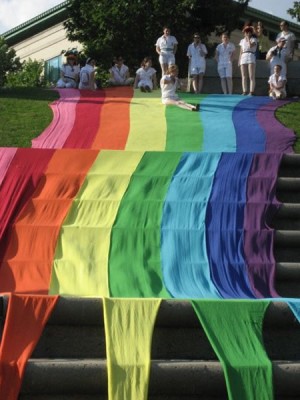WHAT DOES A flag mean? Obviously the answer comes from context. Burned it’s one thing, tattered another, strewn on a coffin something else entirely. The flag, the US one, at least, is inseparable from its moment in history, from this moment in history, and just after the Fourth, the question of meaning and flags seems apt. They’ve been central in installations and performances by Liz Collins, knitter, artist, textile designer. Back in 2005 she and an army of knitters made a giant knit flag on Governors Island as part of The Muster (think: art camp meets Civil War re-enactment is the best way I can describe it). Called Knitting Nation 1, it was her first knit performance.
As she writes: “I wanted people to think about the American flag and to see it defaced on the ground, walked on, as a way to express my pain surrounding the contemporaneous war in Iraq and to consider the ramifications and meaning of patriotism gone awry.”
Later, she took on the meaning of the Pride Flag and what people expected of it, what it made them think. Now with gay marriage legal (at least in NY) there’s something magnificent seeing it spooled out down the monumental steps of tk in Providence, Rhode Island. This past winter she did another knitting performance. Her seventh and eighth iterations of Knitting Nation at the ICA in Boston. There she and her uniformed knitters, all women, conjure up something darker, cooler, more sinister. Think more Margaret Atwood—a kind of futuristic exercise in Taylorization and gender, art and meaning. – JK
~
I use knitting machines, yarn and other materials to create textiles, clothing, pieces, performances and installations. My work is materially and process driven, and the fabric that I make, manipulate, or embellish is at the core of my process. I am motivated not only by the act and history of knitting itself (one richly intertwined with gender and labor); and the emotional and physical experiences of queerness. Although it seems chaotic, the process tightly structured and technically rigorous at its core.
- At Governors Island uniformed knitters make the stripes of the Stars and Stripes
This dialogue also includes a performance and installation project called “Knitting Nation” (KN), which utilizes a team of uniformed machine knitters to build site-specific, large-scale fabric installations. My experience with apparel and textile manufacturing, and a strong desire to perform my craft, has inspired this choreographed response to these vast and complicated industries, in which knitting machines are the tools with which to interrogate gender, sexuality, fashion, hand-crafting and industrial production. This project lays bare the process of machine knitting – one representation of many human-dependent and physically demanding textile and garment making processes and traditions.
- KN 8, Boston ICA, November 2011

KN 1 "This performance was important for me," Collins writes, using "handcraft as a personal means of action during times of emotional stress."

